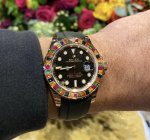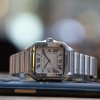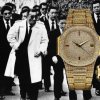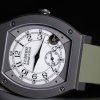In fact, we owe the wristwatches we use today to wars. Before the conflicts and wars that took place at the beginning of the 20th century, wristwatches were not more than an accessory used only by aristocratic women. Men rather used pocket watches. With the First World War, when it became a great necessity for soldiers fighting in the trenches to use their both hands at once, the first men’s wristwatches began to be produced. As a warrior accessory, the wristwatch soon became an object of desire that every man would like to have.
Watches suddenly ceased to be a stylish accessory and became such devices that operate even under the most difficult conditions without missing a single pulse. Producers started to design their watches in line with the needs of the various armed forces around the world. Most of these watches found a place for themselves in the civil life and have been much enjoyed.
One of the iconic watches served on the battlefields was, undoubtedly, Rolex Submariner MilSub. Being the choice of British Royal Navy during 1950s, this piece has still been recognized as the most famous diving watch of all times. With its mechanical simplicity, durability and unfailing precision, this timepiece was promising everything that could be expected from a military watch.

Along the way through 20 years, Rolex offered four different references for the United Kingdom Armies. Among these, only the slightly modified versions of the standard models are known as MilSub models. As from 1954, Rolex equipped the Naval Forces with 50 Big Crown Ref.6538, also known as the Bond Sub, in order to be tested on the field. A few years later, the Naval Forces announced the test results. Two basic improvements were requested. The first request was a redesigning of the bezel in order that the personnel could easily move the watch when they wear gloves, and the second was a strengthening of the pins holding the strap. In response to these recommendations, Rolex expanded the bezel’s diameter and overlapped it onto the case, and replaced the pins with those strong enough to hold the NATO strap under any condition. It is known that there are, today, only 12 pieces of this model the name of which was changed to A/6538. And a few years later, Ref.5512 was added to this model, with an additional feature of body protection.
These models were used, without any fuss, by the British Army until 1967 when the Seamaster 300, newly developed by Omega at the time, was to be preferred. And yet, they returned back to Rolex because of the restrictions posed by Omega for the personnel at the shallow depths. Between 1971 and 1979, using Ref.5513 as a basis, Rolex equipped the British Special Forces soldiers with 1200 watches. Today, Ref.5513, Ref.5517 and double referenced 5513/5517 of the Rolex MilSubs are the rarest pieces that you can find as a Rolex collector. And their prices are considered as being astronomical.
If there has been a diving watch dating back even longer then the Rolex Submariner, it must be the Panerai Radiomir. The production of this watch arose from a need in the process towards the Second World War. In those years, the Italian Naval Forces were training a new type of personnel named Underwater Extermination Specialist. The brand was asked for a waterproof model specially designed for the use of this type of personnel. In order to develop the model, Panerai collaborated with Rolex. The basis for this collaboration was lying on the waterproof Oyster Case which was an invention of Rolex in 1926 and as a result of this collaboration, the staff of the Italian Navy, nicknamed the Frog Man, was equipped as to fully meet the need.
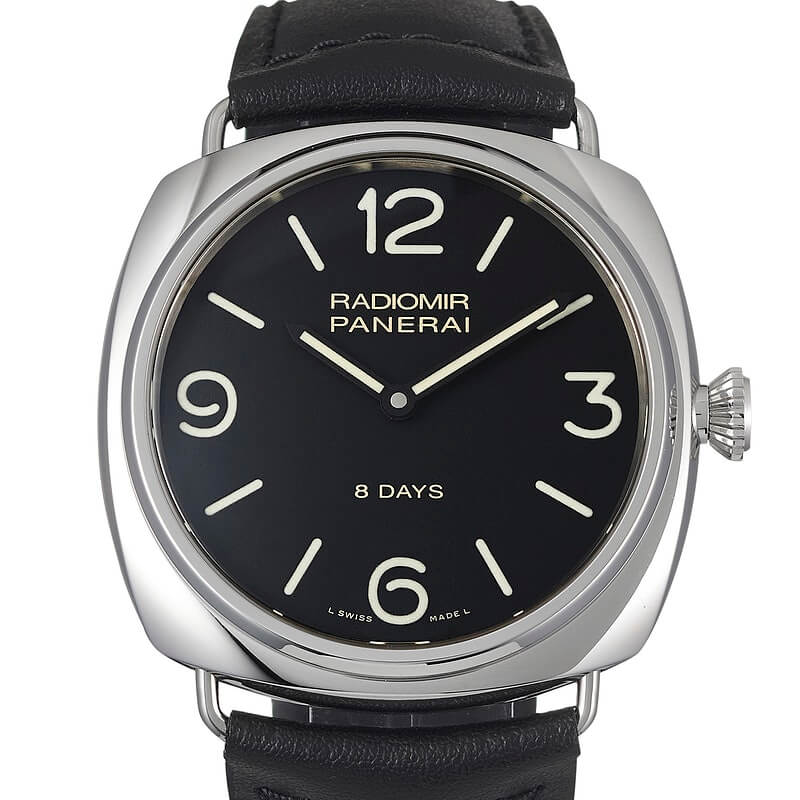
Just like the Rolex MilSub, the Radiomir was also strengthened with the welded case lugs and completed with an expanded bezel. Described as revolutionary at the time, plexiglass was used for its unbreakability feature. To make the dial visible under the sea and in the darkness, the bright material produced from zinc sulfide, radium bromide and mesothorium, which was called Raidomir and patented propriety of Panerai, was doing a good job.
These models with 3646 reference number were used by the Italians throughout the war. Quite impressed by the functionality of the watch, the Germans used it in their own Navy naming it Kampfschwimmer. During their partnership lasting until 1965, Panerai and Rolex produced watches for the army. After the two brands parted ways, Panerai went on to produce watches, on tis own, for the Italian Naval Forces. Then, it terminated its contract in order to focus on the production of commercial watches for civil use.
Panerai made a slow start for its civil journey but became a much sought-after model in short time. Radiomir still maintain its place among the most important pieces of the model range. The most important characteristic missed by the Panerai fans about the military use Radiomir is the body protection exceeding the normal dimensions, which is called the panerist by its fanatics. In the new models, the body protection is designed more elegantly and smaller. Today, PAM721 has been produced as an updated version of the Ref.3646. Having a quite larger case of 47mm diameter, the model doesn’t feature a logo on its sandwich dial and stands out with minimalistic design.
Produced in 1949, the IWC Mark XI is, by far, the watch model that is most sighed for in the milieus of the watch lovers keen on the history of wars. At the beginning of 1940s, the British Ministry of Defense signed a contract with 12 different watch manufacturers in order to design a watch for the use of the aviators. Among these manufacturers, there were brands such as Omega, Longines and JLC together with IWC. None of the manufacturers could produce a design with a precision to meet the air forces’ expectations of time and distance measurement. Thereupon, the Ministry of defense renews the criteria for the request. According to the new criteria, the watch would be fitted with a high quality Swiss-made movement with a power reserve of at least 36 hours and its average deviation would not exceed +/-4 seconds per day. In addition, it would have a Glucydur balance wheel, and a Navirox balance spring, and a hacking mechanism to help synchronization, and a Faraday Cage to protect against the magnetic effects.
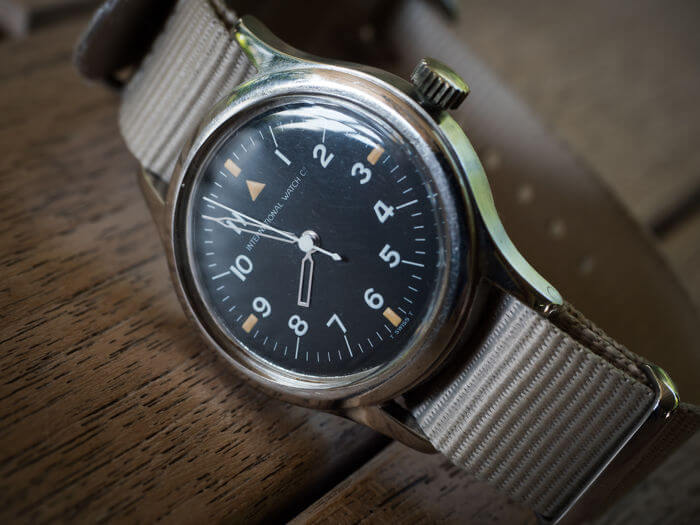
The producers that could meet the newly added criteria were only Jaeger-LeCoultre and IWC. Mark XI was the result of the production in line with the new criteria. It was preferred not only by the British Royal Air Forces but also by the air forces of Australia, and New Zealand, and others. The production of the model’s JLC version ceased in 1953 but the IWC production continued until 1981. Besides, about 1000 pieces were produced for civil use between 1973 and 1984, and offered for sale.
Speaking of the aviation-specific watches, we would be leaving the article incomplete if we don’t mention two iconic models. One of them is B-Uhrens model which was developed by the German Luftfahrtministerium (Ministry of Aviation) in 1930. IWC, A. Lange & Söhne, Wempe, Lacher & Company/Durowe (Laco), and Walter Storz (Stowa) watch companies applied for the production to be made with the specifications declared by the Ministry, and they produced the same model completely separately. The model was designed as to be attached to the pilot’s flight jacket or leg. It had a 55mm wide case and was fitted with a hand-wound movement.

The other iconic design was called as the Kamikaze Watch. It was produced by Seikosha, a subsidiary of Seiko. Seikosha had produced many models for the Japanese Army between 1930 and 1940, but the reason why this model was called as the Kamikaze Watch was that it accompanied the pilots in their last flights during which they sacrificed themselves for their country. For the same reason, these watches are found in a very limited number in our time.
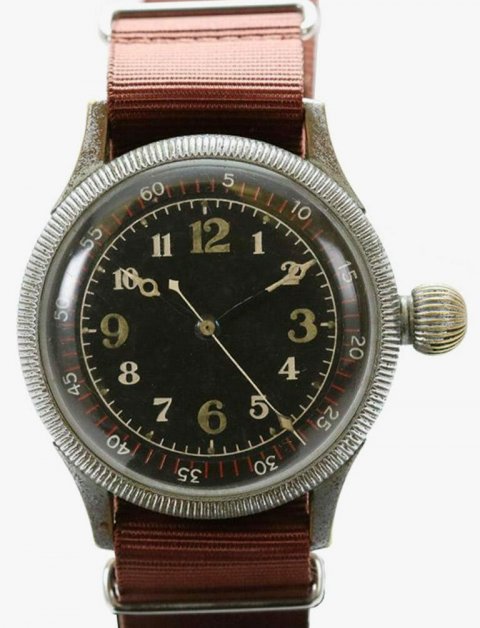
As old as the human history, the history of war is full of pain, tears and blood. Being a guide in every aspect of life, watches didn’t leave the man alone in the battlefield. Perhaps we can remember once more the importance of maintaining the peace, if we all remember once more this saying of Mustafa Kemal Atatürk, the founder of the modern Republic of Turkey: “War must be inevitable and vital. War is a murder unless the life of the nation is exposed to danger.”



